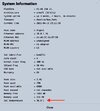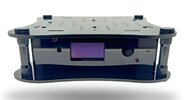I never actually setup the fan script, and didn't even connect it's power lead. Though the ambient temps are still low and will rise somewhat as we head into late spring and summer, that will only result in Moode running at about 39-40℃, but right now it is well below that:After several hours of error free playback with the Windows based Audirvana to the Pi 4 endpoint, it is sitting nicely at 35 C in the Argon 1 case. This is a sweet little case, I'm glad I bought it.
The case instructions include commands to install fan control; you can specify when the fan kicks on and at what intensity. In my case it set to run at 25% when it hits 55 C, and higher rates if the temp still climbs. Running nicely at 35 C, I'm nowhere close to having the fan start. Any concerns I had for temps with the Pi 4 are gone now, smooth sailing ahead.

That particular instance runs a random/shuffle playlist from my local server's entire library 24/7, at the moment that screenshot was taken a 24/192kHz track was playing, which is a relatively high stress test.
The only downside to not running the script is that the power button will only turn the unit ON, but not OFF, no big deal for me as I leave the unit up and running. So in the case of the Moode distro, with it's very light CPU burden and low RAM usage, the fan is not required at all. I doubt you will ever hear it kick on with your settings unless the summertime ambient temps are relatively high.
My culprit that caused all the grief above ? It's looking like the Mac Mini. The MRT (Malware Removal Tool) service is crashing multiple times a day and based on some reading this might be it. Off to the sick bay for the Mac Mini.
I hope thats all that was causing those problems, my own local server is a JRiver instance running on a different Raspberry Pi, and I typically only use the Audirvana server for cloud server Qobuz action where I think it just sounds ever so slightly better than BubbleUPnP or mconnect. That said, I have not had those same issues you described, so that leans in the direction of the MRT crashes in fact being the culprit.




 All of those CD's are still packed in 2 boxes since we moved into the house we finished building 5/19. I just sold a 25 pound Onkyo Reference CD play that I thought I might use...but never did.
All of those CD's are still packed in 2 boxes since we moved into the house we finished building 5/19. I just sold a 25 pound Onkyo Reference CD play that I thought I might use...but never did.